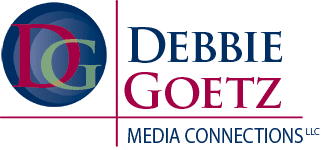How to get your press release noticed
Business owners like positive media coverage. One way to get positive media coverage is to send a press release. Thanks to the Internet, it is very easy to email a press release to numerous reporters all at once. However, a mass emailing of a press release isn’t the best way to reach out to reporters. It is better to be targeted in your outreach to the media. After all, you wouldn’t send a business story to a sports reporter and a sports story to a business reporter.
Still, what can you do to ensure that reporters read and, more importantly, act upon your press release? Here are some tips that can help you create a press release that will capture a reporter’s attention.
Have a Concise Headline
Cision, an online media database and public relations platform, found that the most page views for press releases occur with headlines of 75 characters. So, it is best to have a headline that is 70 characters or less, since email subject lines cut off text beyond that point. Writing such a headline can be tricky. Start with a draft headline, then as you write your press release, pull out the most important and attention-grabbing info and use it in your headline. Statistics and trends are good go-tos for headlines.
Put the Most Important Information First
A press release shouldn’t be a novel. The most important information should be at the beginning. Media outlets, newspapers in particular, have fewer reporters on staff. That means fewer eyeballs reading press releases and an increased likelihood of reporters tossing aside press releases that don’t grab their attention right away. So, it is best to put the important facts in the first paragraph. For example, if you are promoting an event, you would put the name of the event, location, date, time in the first paragraph. Other details such as reason for the event and information about your organization should go in subsequent paragraphs.
Include a boilerplate
Every press release should include a short “About XYZ” paragraph at the end that explains what the mission or purpose of the organization or business. This is known in public relations as the boilerplate. The boilerplate allows reporters to learn more about the organization or business. This paragraph is about 150 words and it explains the organization’s mission, states where it is located and includes the website and relevant social media channels. Including a boilerplate helps the reporter to describe your company and if the website and social media are used in the online article, it will help with search engine optimization.
Follow Up
One would think that since there are fewer reporters in the newsrooms, that those who are left would be eagerly snapping up press releases. Not exactly. Reporters’ in boxes are overflowing with emails from people looking to get press coverage. How can you stand out among all these emails? By following up with the reporter. Send a follow up email or make a phone call a few days after you send your press release. In your message, remind the reporter about the information you sent a few days earlier and ask what his or her plans are. This helps to get a reporter’s attention. Sometimes the reporter will reply that the subject isn’t one that they will be covering. Sometimes the reporter will reply to ask for more information. When that happens, send whatever information they request. Most of the time, a reporter will request that you resend the press release. While resending the press release doesn’t always lead to a story, doing this gets information in front of a reporter. That helps to establish you as a good source or subject matter expert. If you want reporters to call you, you need to follow up with them.
There are no guarantees of media coverage in our business, but if you follow these tips, you may increase the likelihood of your press release being read and your story being featured.
